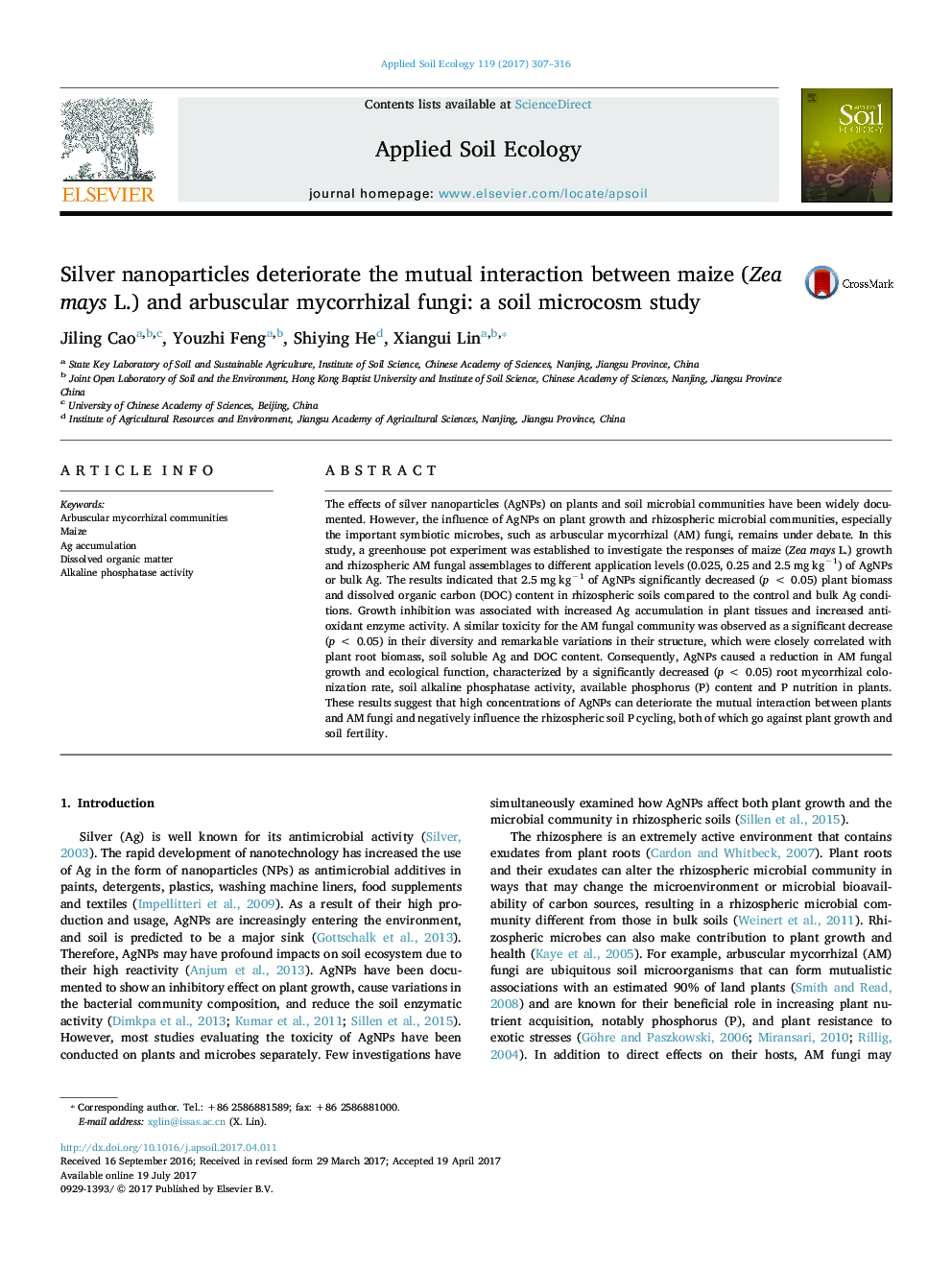| کد مقاله | کد نشریه | سال انتشار | مقاله انگلیسی | نسخه تمام متن |
|---|---|---|---|---|
| 5742637 | 1617765 | 2017 | 10 صفحه PDF | دانلود رایگان |

- The influences of AgNPs on maize growth and the rhizosphere AM fungal community were evaluated.
- Biomass of maize plant and the photosynthetic carbon for AM fungi were decreased.
- AM fungal community was influenced by AgNPs through direct toxicity or affecting maize-AM fungi interaction.
- The mutual interaction between maize and AM fungi were deteriorated.
The effects of silver nanoparticles (AgNPs) on plants and soil microbial communities have been widely documented. However, the influence of AgNPs on plant growth and rhizospheric microbial communities, especially the important symbiotic microbes, such as arbuscular mycorrhizal (AM) fungi, remains under debate. In this study, a greenhouse pot experiment was established to investigate the responses of maize (Zea mays L.) growth and rhizospheric AM fungal assemblages to different application levels (0.025, 0.25 and 2.5 mg kgâ1) of AgNPs or bulk Ag. The results indicated that 2.5 mg kgâ1 of AgNPs significantly decreased (p < 0.05) plant biomass and dissolved organic carbon (DOC) content in rhizospheric soils compared to the control and bulk Ag conditions. Growth inhibition was associated with increased Ag accumulation in plant tissues and increased antioxidant enzyme activity. A similar toxicity for the AM fungal community was observed as a significant decrease (p < 0.05) in their diversity and remarkable variations in their structure, which were closely correlated with plant root biomass, soil soluble Ag and DOC content. Consequently, AgNPs caused a reduction in AM fungal growth and ecological function, characterized by a significantly decreased (p < 0.05) root mycorrhizal colonization rate, soil alkaline phosphatase activity, available phosphorus (P) content and P nutrition in plants. These results suggest that high concentrations of AgNPs can deteriorate the mutual interaction between plants and AM fungi and negatively influence the rhizospheric soil P cycling, both of which go against plant growth and soil fertility.
Journal: Applied Soil Ecology - Volume 119, October 2017, Pages 307-316